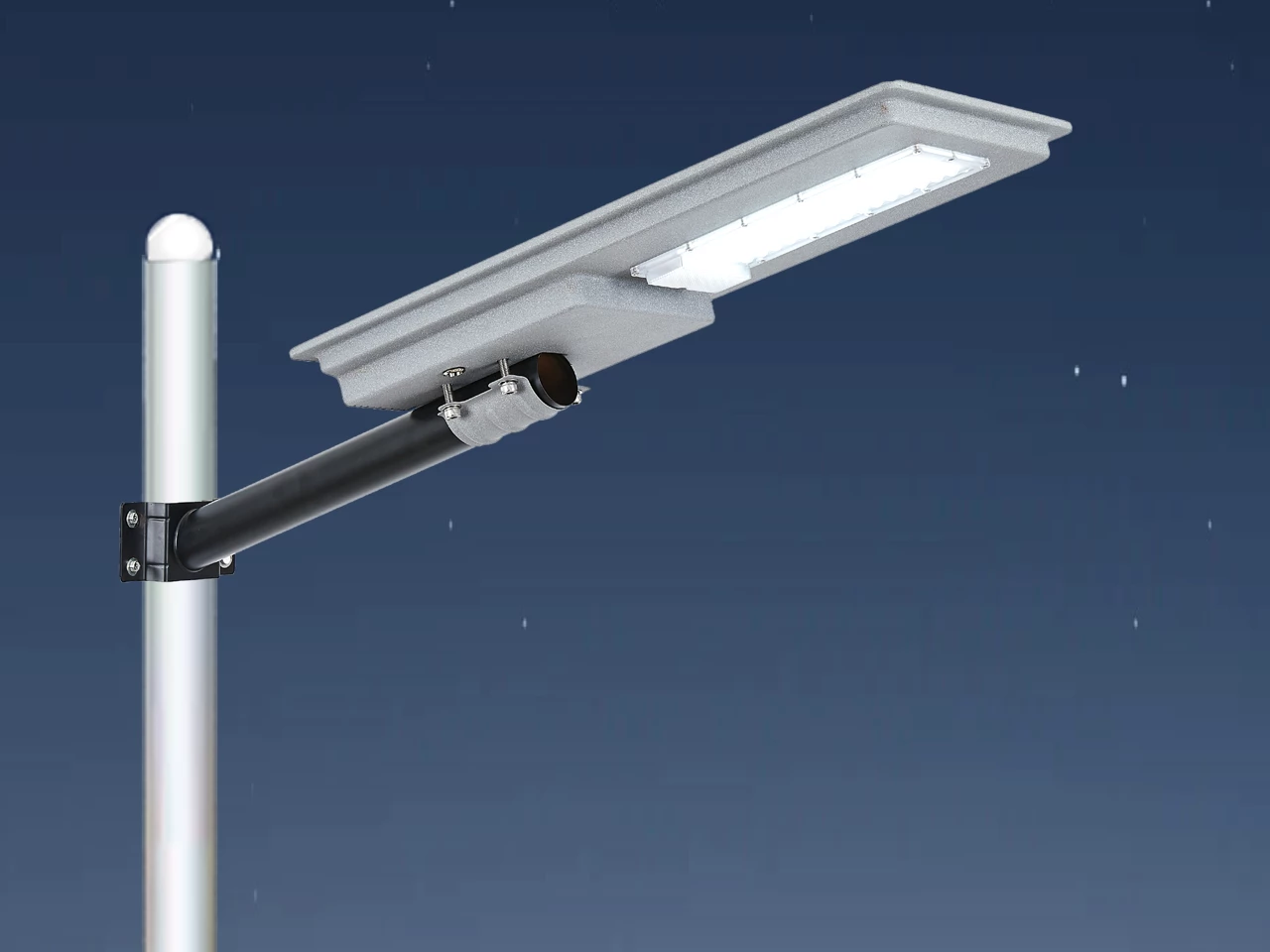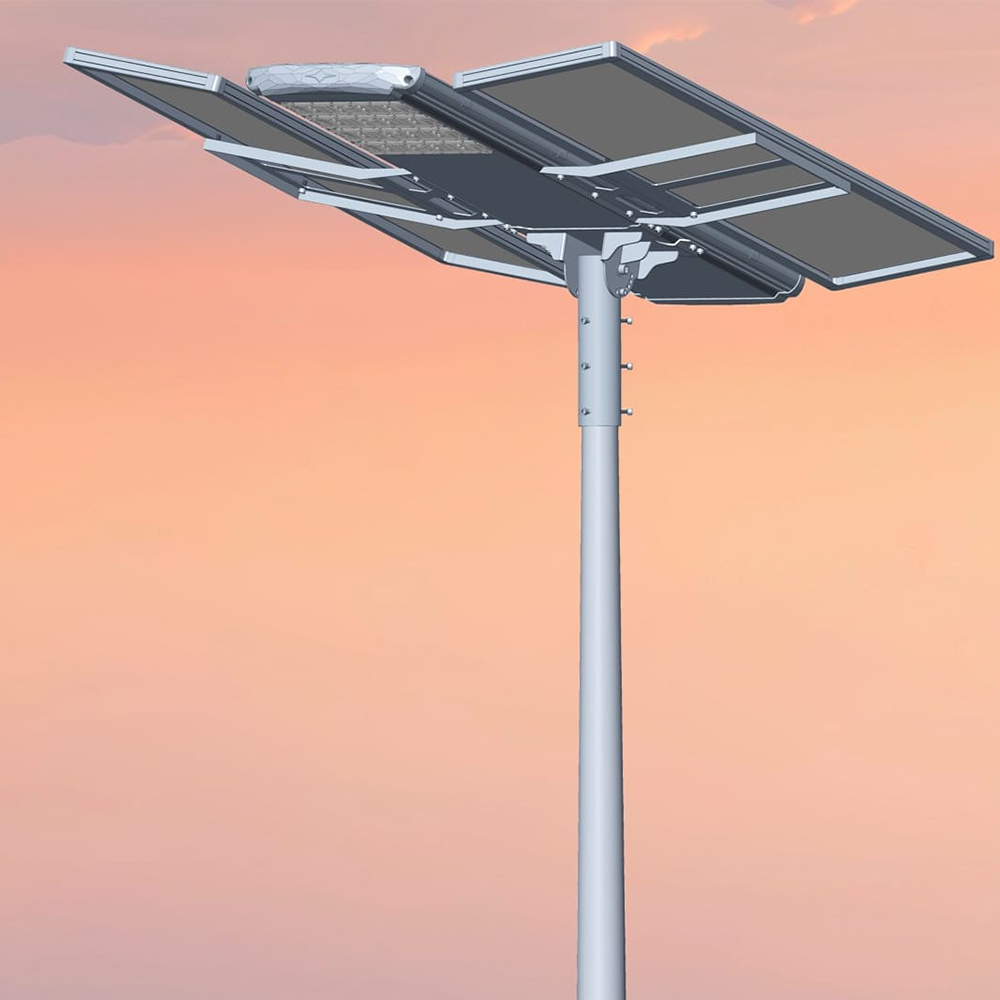What Is the Operating Temperature Range for Solar Street Lights?
Discover the typical and extreme operating temperature ranges for solar street lights, including how heat and cold affect performance, battery life, and system durability.
Solar street lights are used globally in outdoor settings, from tropical climates to icy zones. A key factor in determining performance and reliability is the operating temperature range—the temperature window in which the system functions optimally and safely.

Standard Operating Temperature Range
Most high-quality solar street lights are designed to operate within the following ranges:
- Standard models: -20°C to +60°C (-4°F to +140°F)
- Industrial or customized models: -40°C to +70°C (-40°F to +158°F)
Battery Temperature Tolerance
Batteries are the most temperature-sensitive component. Here's how different battery types perform under various temperatures:
| Battery Type | Charging Range | Discharging Range | Notes |
|---|---|---|---|
| LiFePO₄ | 0°C to 45°C | -20°C to 60°C | Highly stable and safe |
| Lithium-ion | 0°C to 45°C | -20°C to 60°C | High energy density |
| Lead-acid (AGM/Gel) | -10°C to 40°C | -20°C to 50°C | Lower cost, less efficient |
Impact of High Temperatures
- Reduced battery lifespan
- LED driver overheating
- Controller shutdowns
- Faster degradation of rubber and plastic components
Impact of Low Temperatures
- Significant drop in battery capacity
- LEDs continue to operate but need stable current
- Solar panels still generate power if exposed to sun
- Low-quality batteries may freeze or fail
Design Recommendations for Harsh Environments
- Use IP65 or higher rated enclosures
- Controllers with temperature compensation
- LiFePO₄ batteries with BMS protection
- Aluminum casing with proper heat dissipation
- UV and corrosion-resistant coatings
Recommended Configurations by Region
| Region | Climate Challenge | Recommended Configuration |
|---|---|---|
| Middle East | High temperatures | 70°C max rated system with ventilation |
| Northern Europe | Low sun, extreme cold | LiFePO₄ + MPPT + anti-freeze design |
| Southeast Asia | Humidity and rainfall | IP66 with rust-proof body |
| North America | All-season weather | Programmable smart systems |
Why Choose Queneng Lighting?
At GuangDong Queneng Lighting Technology Co., Ltd., our solar street lights are engineered to withstand extreme climates—from -40°C icy zones to 70°C desert heat. With certified LiFePO₄ batteries, IP67-rated enclosures, and smart BMS and control systems, our solutions are trusted globally for durability and performance.

Frequently Asked Questions (FAQ)
Q1: What happens if the temperature goes beyond the rated range?
A: It may cause battery damage, LED dimming, or complete shutdown. Choose systems rated for your environment.
Q2: Can solar street lights work in snowy or icy conditions?
A: Yes, as long as panels are exposed. Cold itself doesn't affect LED but may impact battery performance.
Q3: Are special lights needed in desert regions?
A: Yes. Use high-temperature resistant batteries and metal housing with ventilation.
Q4: How do I verify the temperature rating?
A: Request product specifications and temperature test reports from the manufacturer.
Q5: Are Queneng's solar street lights suitable for cold areas?
A: Absolutely. Our lights are tested for -40°C operation with robust BMS and cold-resistant designs.

Have more questions about our products or services?
The latest hot news you might like

Discover how solar panels power street lights, exploring the technology behind solar energy conversion, storage systems, and how solar-powered street lights are revolutionizing urban and rural lighting solutions.

Learn how AC Solar Hybrid Street Lights work, their advantages, disadvantages, system behavior in low-sunlight conditions, and why hybrid technology is ideal for regions with unstable sunlight.

Municipalities around the world are increasingly adopting solar-powered streetlights as part of their urban development strategies. Rising energy costs, the need for sustainable infrastructure, and government green initiatives are driving cities to switch from traditional street lighting to advanced LED solar streetlights.
Queneng Lighting provides municipalities with cost-effective, energy-efficient, and durable solar lighting solutions, ensuring safe and sustainable public spaces.

In recent years, the purchase of solar streetlights for municipalities has become a growing trend across the globe. Local governments are under pressure to reduce public expenditure, promote green energy, and create safer communities. Solar streetlights provide a reliable, cost-effective, and sustainable solution that meets these needs. Queneng Lighting, as a leading solar street lighting manufacturer, has supported multiple municipal projects worldwide with customized and energy-efficient solutions.
FAQ
Distributors
What are the benefits of becoming a Queneng distributor?
As a Queneng distributor, you will gain access to high-quality, customizable solar lighting products, competitive pricing, marketing support, and exclusive distribution rights in some regions. We provide comprehensive training, technical support, and reliable logistics to help grow your business.
Solar Street Light Luqiu
Can Luqiu solar street lights be used in remote or off-grid locations?
Yes, Luqiu solar street lights are ideal for remote or off-grid locations where access to electricity is limited or unavailable. They operate independently, relying solely on solar energy, making them a perfect solution for rural areas, pathways, and off-grid communities.
Sustainability
How should I maintain solar street lights for optimal performance?
To ensure optimal performance, we recommend cleaning and inspecting the lights every 6–12 months. Regularly cleaning the photovoltaic panels, checking the battery health, and confirming the integrity of the lights and control systems are essential for long-term reliable operation.
Municipal and Public Infrastructure
How do solar streetlights perform in extreme weather conditions?
Solar streetlights are designed to withstand harsh environments, including high winds, heavy rain, snow, and extreme temperatures. Our products are IP65-rated for waterproofing and are built with corrosion-resistant materials.
Solar Street Light Lulin
How easy is it to install Lulin solar street lights?
Lulin solar street lights are designed for easy installation. They do not require any wiring to the power grid, making them perfect for areas without electrical infrastructure. The installation typically involves mounting the pole, securing the light fixture, and positioning the solar panel for maximum sunlight exposure. The lights can be installed quickly and efficiently, saving on installation costs.
Tourist Attractions and Resorts
Can solar lights be used for both functional and decorative purposes?
Yes, solar lighting is versatile and can be used for both functional purposes, such as illuminating pathways and parking lots, and decorative purposes, such as enhancing garden features or architectural details.

If you would like more information about Queneng solar lighting solutions, please send us a message by filling out the form below. Our professional team will get back to you within 24 hours!
Rest assured that your privacy is important to us, and all information provided will be handled with the utmost confidentiality.
Schedule a Meeting

Book a date and time that is convenient for you and conduct the session in advance.
Have more questions about our products or services?



















